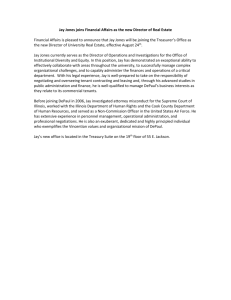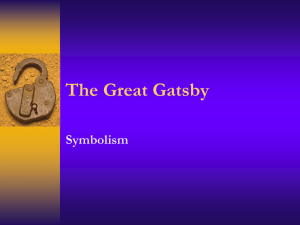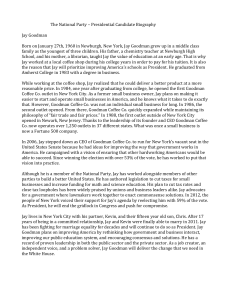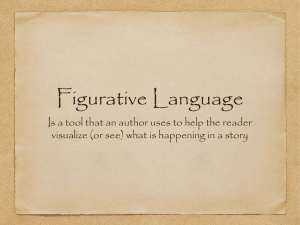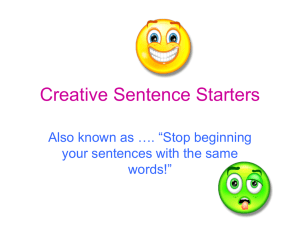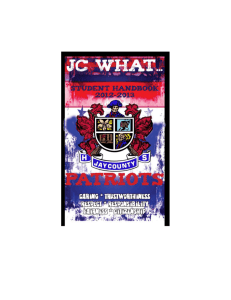Jay - RITAP
advertisement
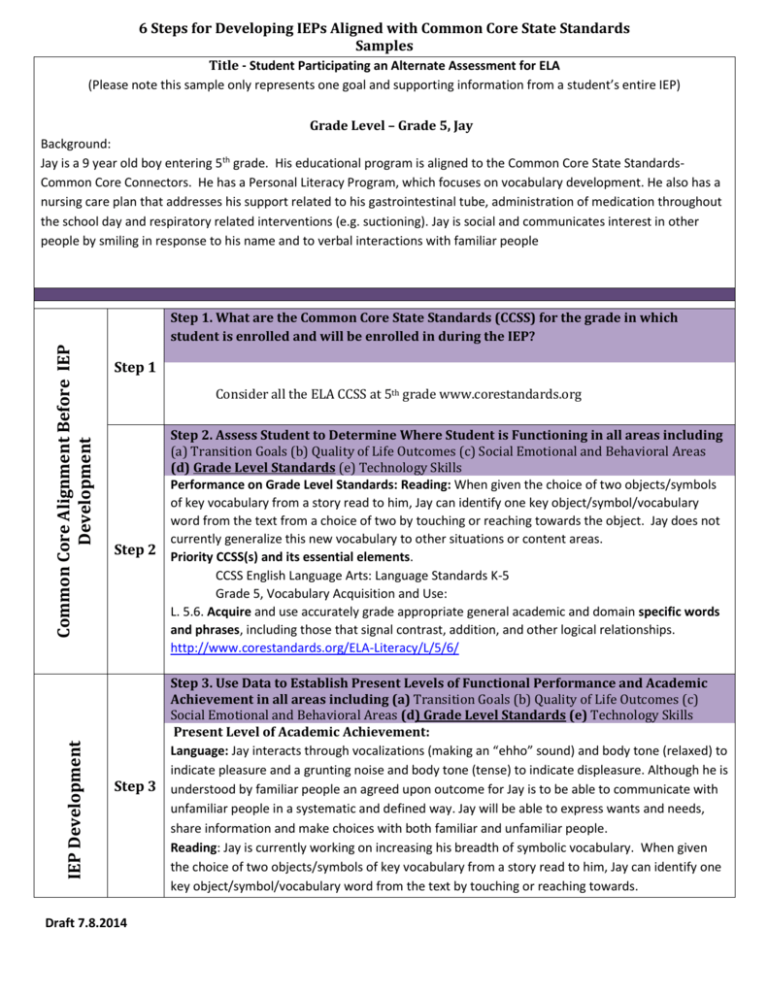
6 Steps for Developing IEPs Aligned with Common Core State Standards Samples Title - Student Participating an Alternate Assessment for ELA (Please note this sample only represents one goal and supporting information from a student’s entire IEP) Grade Level – Grade 5, Jay Background: Jay is a 9 year old boy entering 5th grade. His educational program is aligned to the Common Core State StandardsCommon Core Connectors. He has a Personal Literacy Program, which focuses on vocabulary development. He also has a nursing care plan that addresses his support related to his gastrointestinal tube, administration of medication throughout the school day and respiratory related interventions (e.g. suctioning). Jay is social and communicates interest in other people by smiling in response to his name and to verbal interactions with familiar people IEP Development Common Core Alignment Before IEP Development Step 1. What are the Common Core State Standards (CCSS) for the grade in which student is enrolled and will be enrolled in during the IEP? Step 1 Consider all the ELA CCSS at 5th grade www.corestandards.org Step 2 Step 3 Draft 7.8.2014 Step 2. Assess Student to Determine Where Student is Functioning in all areas including (a) Transition Goals (b) Quality of Life Outcomes (c) Social Emotional and Behavioral Areas (d) Grade Level Standards (e) Technology Skills Performance on Grade Level Standards: Reading: When given the choice of two objects/symbols of key vocabulary from a story read to him, Jay can identify one key object/symbol/vocabulary word from the text from a choice of two by touching or reaching towards the object. Jay does not currently generalize this new vocabulary to other situations or content areas. Priority CCSS(s) and its essential elements. CCSS English Language Arts: Language Standards K-5 Grade 5, Vocabulary Acquisition and Use: L. 5.6. Acquire and use accurately grade appropriate general academic and domain specific words and phrases, including those that signal contrast, addition, and other logical relationships. http://www.corestandards.org/ELA-Literacy/L/5/6/ Step 3. Use Data to Establish Present Levels of Functional Performance and Academic Achievement in all areas including (a) Transition Goals (b) Quality of Life Outcomes (c) Social Emotional and Behavioral Areas (d) Grade Level Standards (e) Technology Skills Present Level of Academic Achievement: Language: Jay interacts through vocalizations (making an “ehho” sound) and body tone (relaxed) to indicate pleasure and a grunting noise and body tone (tense) to indicate displeasure. Although he is understood by familiar people an agreed upon outcome for Jay is to be able to communicate with unfamiliar people in a systematic and defined way. Jay will be able to express wants and needs, share information and make choices with both familiar and unfamiliar people. Reading: Jay is currently working on increasing his breadth of symbolic vocabulary. When given the choice of two objects/symbols of key vocabulary from a story read to him, Jay can identify one key object/symbol/vocabulary word from the text by touching or reaching towards. Step 4 Step 5 Step 6 1 Step 4. Prioritize and Use Present Levels of Performance to Develop: (a) Transition Services, (b) Measurable Functional Goals, (c) Measurable Academic Goals Aligned with Grade Level Common Core State Standards, (d) Measurable Goals for Developing Technology Skills Measurable Annual Goals Aligned with Grade-Level Academic Standards. Baseline: After listening to an adapted grade level text with visual supports, Jay can identify one key object/symbol/vocabulary word from the text from a choice of two the text by touching or reaching towards. Goal: After listening to an adapted grade level text Jay will identify two key objects/symbols/vocabulary words when requested from a choice of three by touching or reaching towards in 3 out of 4 trials.1 Short term objectives: STO1: After reading an adapted grade level text Jay will identify one key object/symbol/vocabulary word from a choice of three by touching or reaching towards. STO2: After reading an adapted grade level text Jay will identify two key vocabulary objects/symbols/vocabulary words from a choice of two by touching or reaching towards. Step 5: Establish Type of Data to be Collected, How Often, and Progress Monitoring Report Progress Monitoring Data to Families Progress Measurement (Type and How Often): Data kept daily on number of correct trials for each vocabulary word used. Report Progress Monitoring Data to Parents: Step 6. Identify Specifically Designed Instruction and Include Related Services Identify the instruction and classroom assessment Accommodations and Program Modifications to Provide Access and Progress in the General Curriculum Identify Assistive Technology devices and services need for instructions or assessment Determine Accommodations for State and Local Assessment Specially designed instruction: Individual explicit instruction in literacy using objects/symbols to represent vocabulary from adapted texts. Accommodations and/or program modifications: Grade level text will be adapted and shared with Jay and his peers in small groups. Jay will use an object/symbol system to represent vocabulary from the adapted text. Jay will be provided immediate explicit feedback on the use of the object/symbol system. Other goals in the student’s IEP would focus on using the new vocabulary throughout the day in functional communication Draft 7.8.2014
